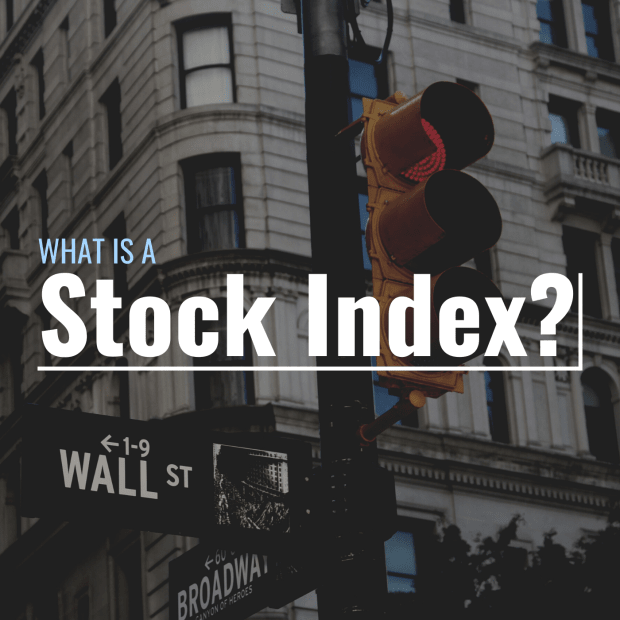
What Is a Stock Index?
A stock index is a collection of stocks intended to be reflective of the stock market as a whole or, in some cases, a particular industry or segment of the market. In other words, a stock index can be thought of as a representative sample of the entire stock market or a particular segment or industry therein. Think of a stock index like a hypothetical portfolio put together for the public to follow.
Stock indexes like the S&P 500 and the Russell 3,000 go up and down in value according to the weighted average price movements of their component companies. Investors look to stock indexes like these to see what’s going on with the market and to evaluate the performance of their own portfolios by using indexes as performance benchmarks.
How Are Stock Indexes Put Together?
In the same way that researchers pull a sample from the population they wish to study, stock indexes pull a sample from the group of stocks they wish to study. Some indexes aim to sample the market at large, while others aim to sample a specific section of the market (e.g., stocks with high market capitalization, the energy industry, dividend-paying stocks, etc.)
Different stock indexes are put together in different ways depending on their respective purposes. Because it aims to be an accurate benchmark for the American equity market as a whole, the Wilshire 5,000 consists of every stock traded on a major U.S. stock exchange (excluding penny stocks that trade on the over-the-counter market). The Dow Jones U.S. Semiconductors Index, on the other hand, includes far fewer stocks, as it only aims to sample and track the semiconductor subsector of the market.
What Are Stock Indexes Used For?
Investors, institutions, fund managers, and analysts monitor the performance of stock indexes to understand how the market—or a particular segment of it, like the automobile industry—is doing at any given time. Often, investors and fund managers use indexes as benchmarks against which to compare the performance of their own portfolios. A successful fund manager might use their fund’s outperformance of a particular index over a period of time as a selling point to attract new investor dollars.
The news media often treats stock indexes as gauges of market health. When major, “bellwether” stock indexes like the S&P 500 or the Nasdaq drop in value consistently, reporters may reference a “bear market” and warn of economic decline. When these same indexes go up in value consistently, the media may reference a “bull market” and celebrate economic growth.
If you hear a financial reporter say that “the Dow is up three percent today,” that means that the collection of stocks that make up the Dow Jones Industrial Average (a popular stock index) went up in value by three percent over the course of the day. This doesn’t mean that each stock in the index went up by three percent, however. Three percent is simply the overall change in value of the index as a whole.
How Are Stock Indexes Weighted?
Stock indexes include many stocks, but these stocks are not always included in equal amounts. Most indexes are weighted in some way, meaning that not all component stocks receive the same representation. A given index might be weighted such that one stock has 6% representation while another has only 1.5%.
There are many factors that indexes can be weighted by, the most common of which are market capitalization and share price. The S&P 500, for example, is weighted by float-adjusted market capitalization, while the Dow Jones Industrial Average is weighted simply by share price.
Price-Weighted Indexes
In price-weighted indexes, stocks with higher share prices have more influence on index value than stocks with lower share prices. This happens naturally if an index is not weighted by any other factor.
For instance, if there was an index composed of Stock A, which has a share price of $30, Stock B, which has a share price of $50, and Stock C, which has a share price of $200, the price of the index would be $93.33—the average—if the index was not weighted by anything other than price.
Thus, price fluctuations in Stock C would affect the index price more than price fluctuations in Stocks A or B. If Stock A went up in value by 10% (or $3 per share), the index would go up by about 1% to $94.33. If stock C went up by 10% (or $20 per share), however, the index would go up by about 7% to $100.
Sometimes, the number of shares a company has in circulation can change. This happens most often due to stock splits (which increase the number of shares in circulation) and stock buybacks (which decrease the number of shares in circulation). When the number of shares in circulation changes, share price changes accordingly. If stocks are split, share price goes down, whereas if stocks are bought back, share price goes up.
To account for these sorts of changes in share price, the calculation for a price-weighted index’s value typically includes a divisor that is changed every time one of the component stocks undergoes a split or a buyback. If this divisor was not included, the index’s value could change significantly without the value of its component companies changing at all. The Dow Jones Industrial Average, the second-oldest American stock index, is a price-weighted index that uses a divisor of this sort.
Capitalization-Weighted Indexes
In capitalization-weighted indexes (also known as market value-weighted indexes) component companies are weighted according to their market capitalization (total market value, or number of shares outstanding multiplied by share price) instead of their share price. This sort of weighting usually makes more sense than price weighting because share price is not always reflective of total market value.
For instance, Company A might have a share price of only $30 but have 10 million shares outstanding for a total market value of $300 million. Company B might have a share price of $50 but have only 3 million shares outstanding for a total market value of only $150 million. If Companies A and B were included in a price-weighted index, Company B would have more influence on the index’s price despite being smaller. In a capitalization-weighted index, on the other hand, company A would have twice the influence of Company B because it is twice as large in terms of market value.
How Are Index Values Calculated?
Different stock indexes’ values are calculated differently depending on how they are weighted. The calculations for price-weighted indexes are simpler than the calculations for capitalization-weighted indexes, but both involve the use of a divisor that is prone to change over time.
Initially, most price-weighted indexes are calculated by adding up the current share prices of the index’s component companies then dividing the total by the number of companies included to get an average. If companies were never added to or removed from an index based on how well they meet the criteria for inclusion, and if the component companies never had stock buybacks or splits, then the calculation would remain this simple. In the real world, however, things like this happen frequently, and each time they do, the divisor in the calculation is modified to suit the new conditions.
The same goes for capitalization-weighted indexes, although these are even more complicated, as component companies are included in different amounts that correspond to their market capitalizations. If one company’s market capitalization represented 19% of the market cap of the entire index, that company would receive 19% representation in the calculation of the index’s value.
6 Popular U.S. Stock Indexes
Frequently Asked Questions (FAQ)
Below are answers to some of the most common questions investors have about indexes.
What Is a Bellwether Index?
Bellwether is a term used to describe a financial security (like a stock) or an index of financial securities whose performance is considered reflective of larger-scale market trends. Because the S&P 500 represents over two-thirds of the market capitalization of the American stock market, many consider it a bellwether index. The Wilshire 5,000 is an even better example of a bellwether index because it is composed of virtually every equity traded on major American stock exchanges and is thus extremely reflective of market trends.
Are There Indexes for Other Types of Securities?
In addition to stock indexes, which sample the stock market or a segment therein, there are also bond indexes and cryptocurrency indexes. These indexes work the same way. A bond index may aim to sample the entire bond market or just a segment of it (e.g., corporate bonds). Similarly, a crypto index may aim to sample the entire crypto market or just a segment of it (e.g., small-cap cryptocurrencies).
What Is the Oldest U.S. Stock Index?
The oldest stock index is the Dow Jones Transportation Average or DJTA, which was created by Charles Dow on July 3rd, 1884. The index, which is still around today, is price-weighted and includes 20 transportation companies.
Is the Plural of Index "Indexes" or "Indices?"
Both indexes and indices are widely used and broadly accepted plural versions of the word index. Indexes is the more common spelling in the U.S. and Canada, while indices is more popular in other English-speaking parts of the world. To maintain internal consistency, the indexes spelling was used exclusively in this article.







